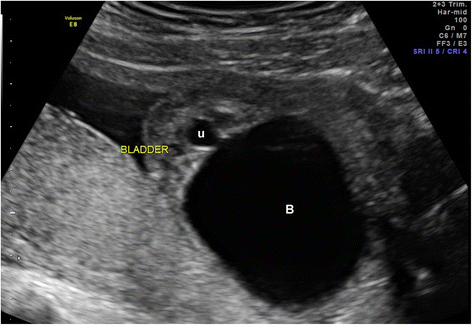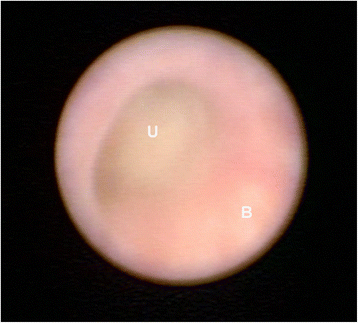Fetal Lower Urinary Tract Obstruction (LUTO): a practical review for providers
- PMID: 27057343
- PMCID: PMC4823687
- DOI: 10.1186/s40748-015-0026-1
Fetal Lower Urinary Tract Obstruction (LUTO): a practical review for providers
Abstract
Fetal lower urinary tract obstruction (LUTO) is a serious condition, which commonly results in marked perinatal morbidity and mortality. The characteristic prenatal presentation of LUTO includes an enlarged bladder with bilateral obstructive uropathy. While mild forms of the disease result in minimal clinical sequelae, the more severe forms commonly lead to oligohydramnios, dysplastic changes in the fetal kidneys, and ultimately result in secondary pulmonary hypoplasia. The aim of this review is to provide practitioners with a practical and concise overview of the presentation, evaluation, and treatment of LUTO.
Figures





References
-
- Morris RK, Malin GL, Quinlan-Jones E, Middleton LJ, Diwakar L, Hemming K, et al. The Percutaneous shunting in Lower Urinary Tract Obstruction (PLUTO) study and randomised controlled trial: evaluation of the effectiveness, cost-effectiveness and acceptability of percutaneous vesicoamniotic shunting for lower urinary tract obstruction. Health Technol Assess. 2013;17:1–232. doi: 10.3310/hta17590. - DOI - PMC - PubMed
-
- Ruano R, Sananes N, Sangi-Haghpeykar H, Hernandez-Ruano S, Moog R, Becmeur F, et al. Fetal intervention for severe lower urinary tract obstruction: a multicenter case–control study comparing fetal cystoscopy with vesicoamniotic shunting. Ultrasound Obstet Gynecol. 2015;45:452–8. doi: 10.1002/uog.14652. - DOI - PubMed
Publication types
LinkOut - more resources
Full Text Sources
Other Literature Sources

